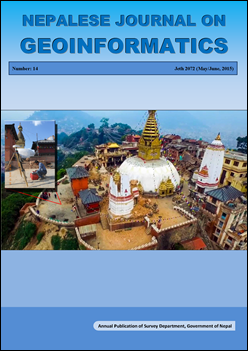Spatial Structure of Urban Landuse in Kathmandu Valley
DOI:
https://doi.org/10.3126/njg.v14i0.16975Keywords:
Urban landuse change, spatial structure, landuse fragmentation, spatial metrics, GIS and RSAbstract
Spatial structure of urban land use has been interest of study since early 20th century. The current study examines dynamics of spatial structure of urban agricultural landuse and how agricultural landuse is placed within the existing structure. The study explores the direction and dimension of landuse change and characteristics of spatial fragmentation in Kathmandu Valley. Technological tools like GIS and Remote Sensing, and Spatial metrics/indices has been used for spatial analysis. The study shows that within ten years time span of 2003 to 2012, urban land use has gone drastic change in Kathmandu valley. Remarkable change in terms of pace and direction is evident in agriculture and built-up classes which signifies the rapid urbanization trend in the valley. The finding shows that spatial structure of the urban landuse of the valley is impending towards more heterogeneous and diverse landscape. Similarly, spatial fragmentation analysis highlights characteristic development of new isolated urban patches inside relatively larger agriculture patches fragmenting them into number of smaller patches. The study concludes that the importance of GIS/RS tools and technology in identifying and analyzing structure and dynamics of land use within prevailing complex urban system of Kathmandu valley is reasonable. The composition and configuration of spatial structure computed through spatial metrics are thus helpful for understanding how landscape develops and changes over time.
Nepalese Journal on Geoinformatics, Vol. 14, 2015, Page: 41-45




